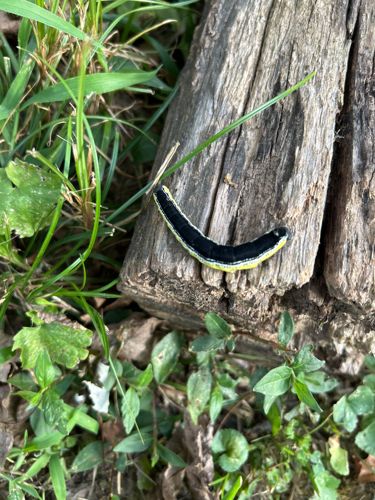Yellow-striped Armyworm
Scientific Name: Spodoptera ornithogalli
Order & Family: Lepidoptera, Noctuidae
Size: Larvae (caterpillars) typically reach 35-45 mm (1.4-1.8 inches) in length when fully grown. Adult moths have a wingspan of 30-40 mm (1.2-1.6 inches).

Natural Habitat
Found in agricultural fields, gardens, meadows, open woodlands, and disturbed areas where host plants are present. They are especially prevalent in warm, temperate to tropical regions.
Diet & Feeding
The Yellow-striped Armyworm is polyphagous, meaning it feeds on a wide variety of plants. Its diet includes various agricultural crops (alfalfa, cotton, corn, soybeans, tomatoes, etc.), garden plants, weeds, and wild herbaceous plants.
Behavior Patterns
Larvae (caterpillars) are primarily nocturnal feeders but may be seen during the day, especially when moving between host plants or seeking a pupation site. They are known for their 'looping' movement, characteristic of geometrid caterpillars, where they bring their rear prolegs up to meet their thoracic legs, creating an inverted 'U' shape as they move. The adult moths are also nocturnal and are attracted to lights.
Risks & Benefits
Potential Risks: The Yellow-striped Armyworm is a significant agricultural pest. Its larvae can cause extensive defoliation to a wide range of crops, leading to economic losses for farmers. Outbreaks can require pesticide applications. Potential Benefits: As part of the ecosystem, they serve as a food source for various predators (birds, parasitic wasps, predatory insects) and are part of the food chain. Adult moths can act as pollinators to a limited extent, though their primary ecological role is as herbivores.
Identified on: 8/23/2025